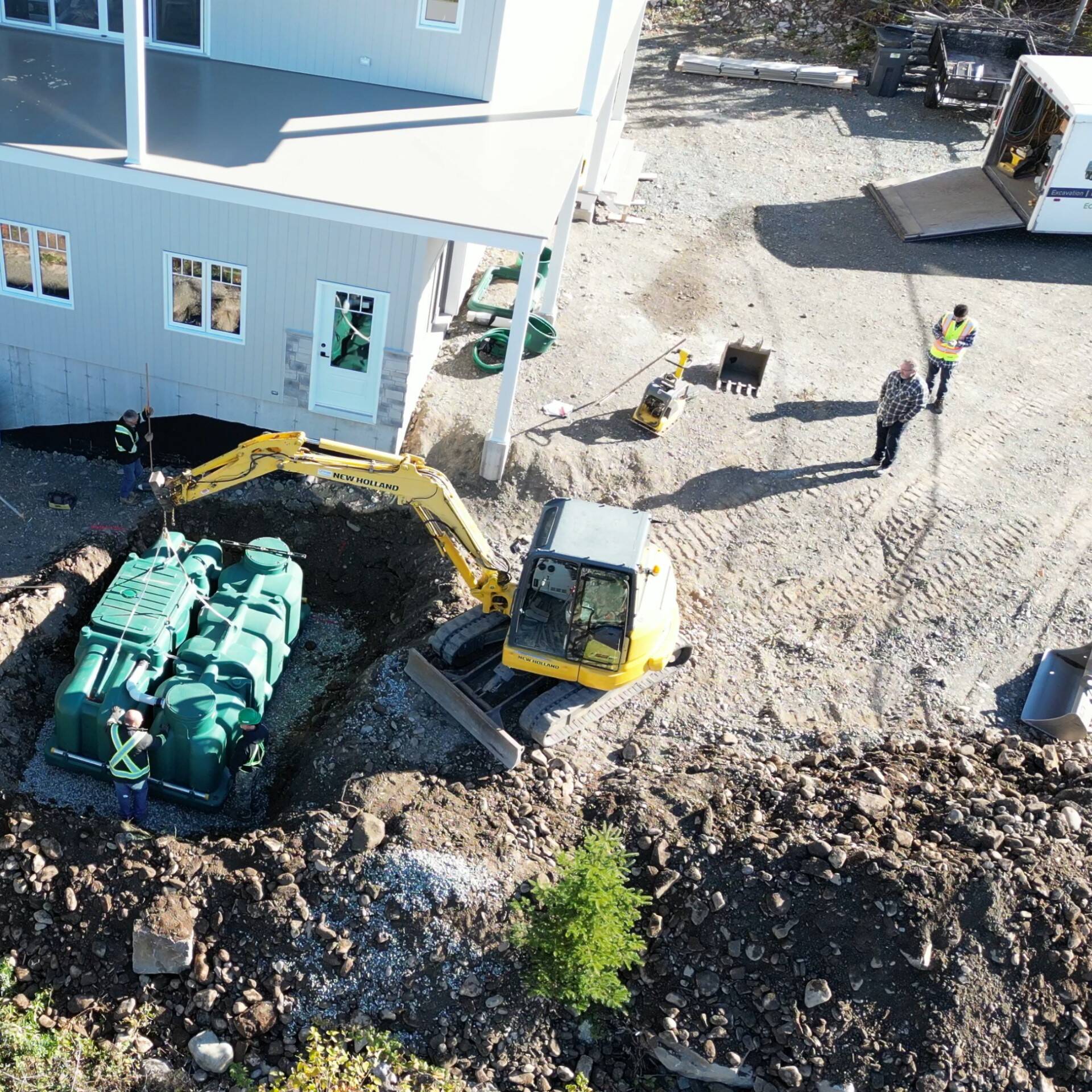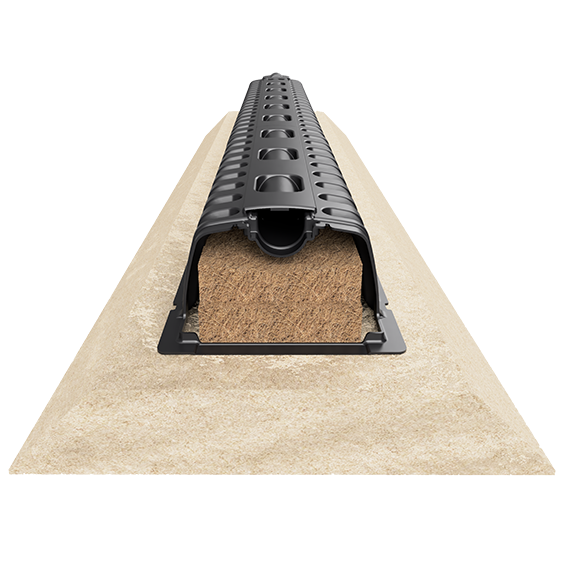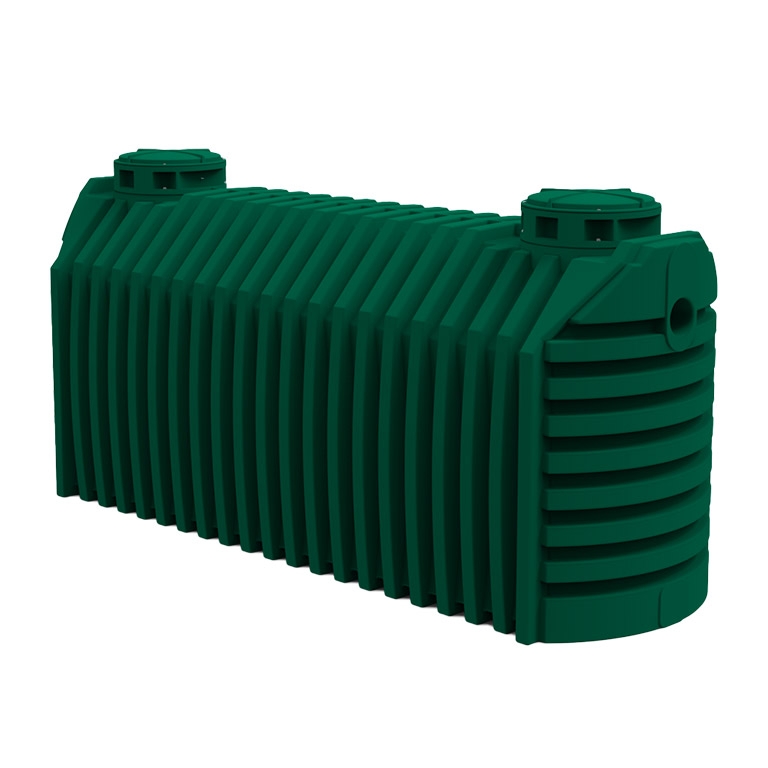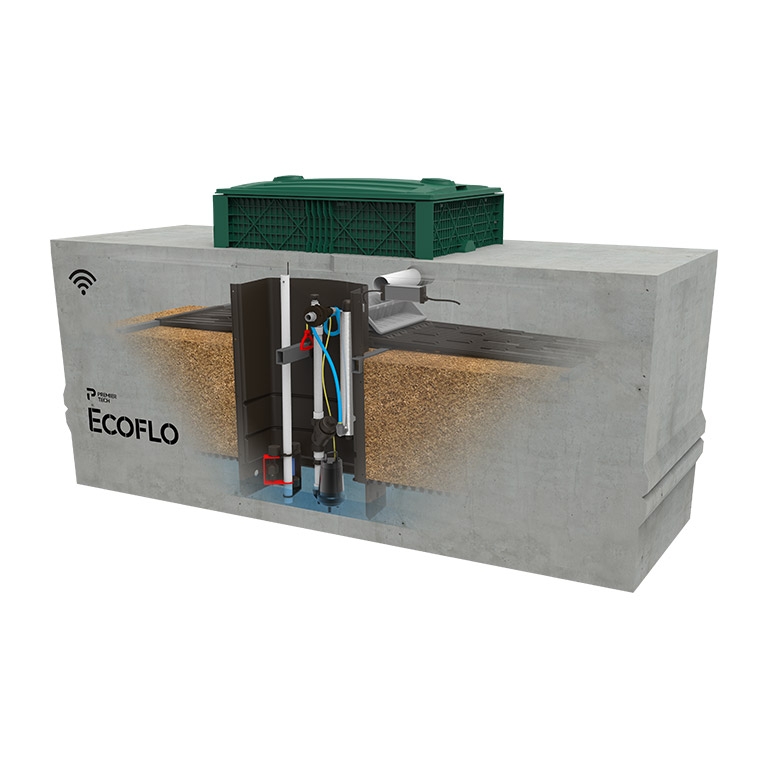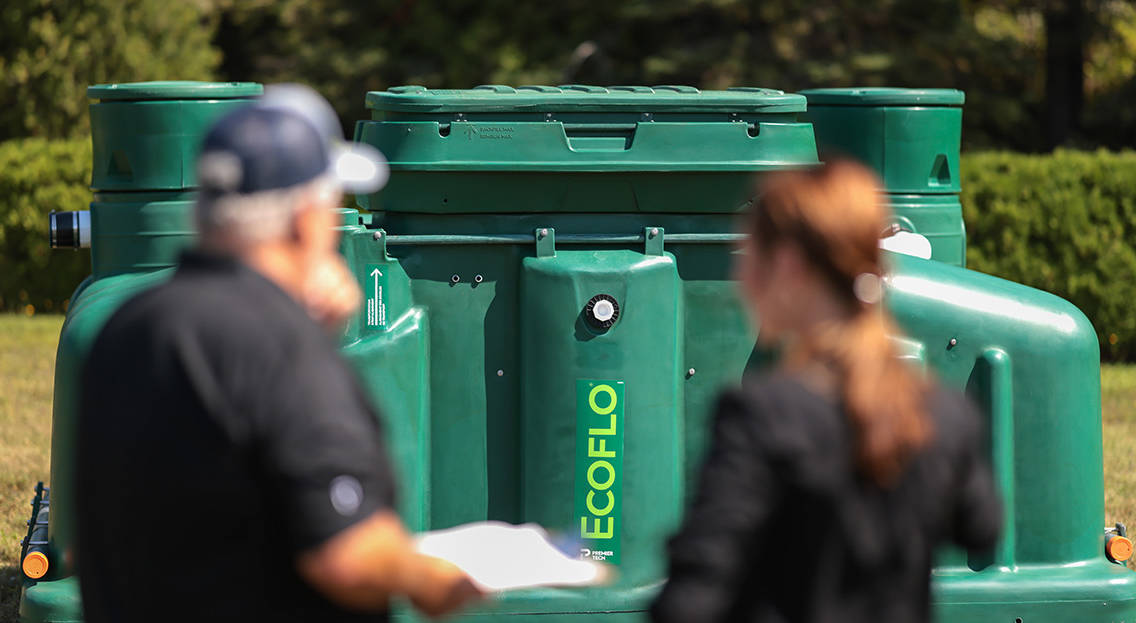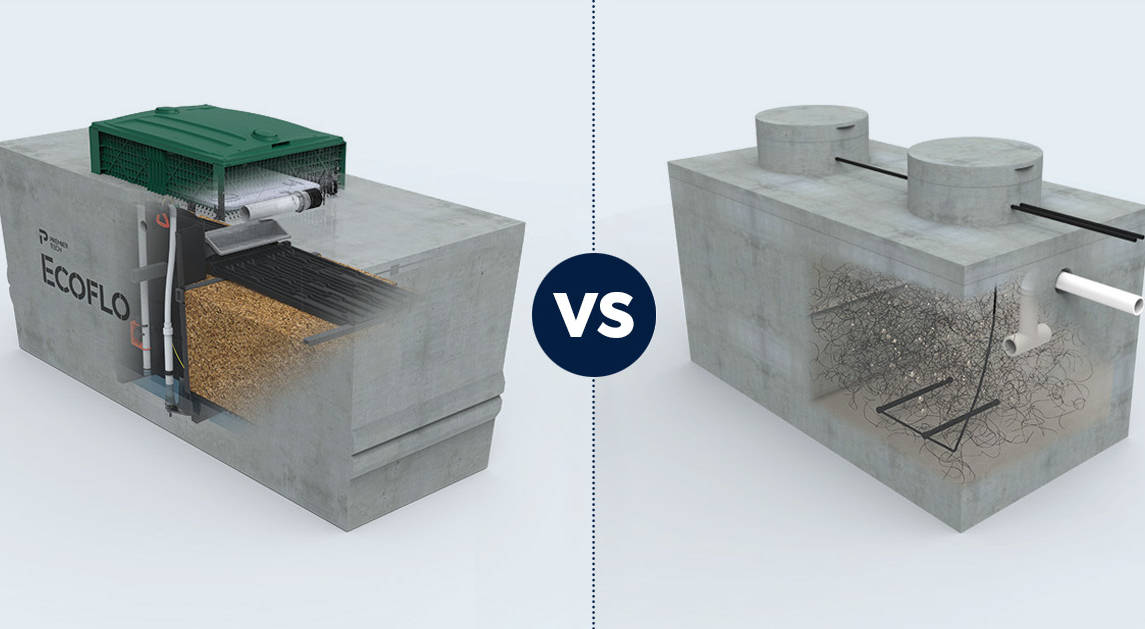What is the best alternative septic system for high water tables?
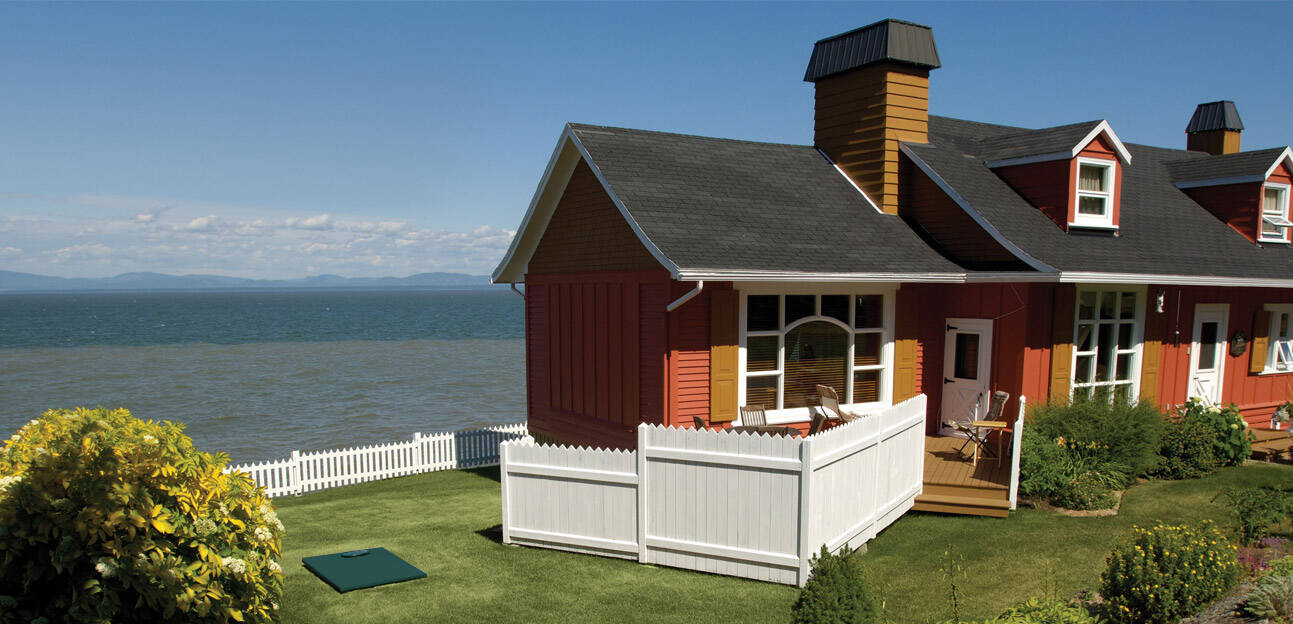
Having a rural home next to a river or lake feels like a dream. But if it comes with a high water table, it can be tough to choose the right septic system.
Properties with high water tables often lack the soil that septic systems need to treat wastewater. Homeowners in these situations need to rely on advanced treatment options instead.
In this article, we’ll go over what a high water table is, where you’re likely to find one, and why it might pose a challenge to your septic system. We’ll also explain why the Ecoflo compact biofilter is the best choice for high water tables compared to other options in Canada.
Table of contents
A high water table occurs when groundwater is close to ground level. While heavy rain can cause groundwater to rise, there are other conditions that also lead to high water tables.
High water tables happen most often in:
- Coastal and shoreline regions
Groundwater stays high in coastal regions because the sea constantly refills aquifers. Storm surges and tides also contribute to high water tables.
- Floodplains and low-lying areas
Floodplains are found near streams and rivers. They are easily submerged because they are flat, which leads to high groundwater levels.
- Marshlands and wetlands
Marshes and wetlands naturally form in areas with water-saturated soil. They have dense vegetation that keeps water close to the surface, creating the perfect conditions for high water tables.
- Regions with heavy clay and impermeable soils
Clay soils drain slowly, causing water to stay near the surface for extended periods. This slow drainage leads to high water tables in areas where underlying soils or bedrock also limit infiltration.
- Areas with heavy rain or snow melt
Places with heavy rain or snow have more water entering the ground due to runoff or snowmelt, which raises the water table.

High water tables are common in coastal and shoreline regions.
In a conventional septic system, wastewater leaves your home and enters a septic tank. The septic tank separates sludge and scum and sends liquids into a network of perforated pipes known as a drain field (some people call it a leach field).
The drain field allows wastewater to infiltrate through a layer of sand and gravel, where bacteria break down contaminants.
Once wastewater exits the drain field, it percolates through native soil, which completes treatment by removing any remaining impurities. Effluent is then returned to the surrounding environment via groundwater.
As you can see, traditional septic systems rely on native soil to finish the treatment process. But if your water table is too high, they don’t have the soil they need to treat wastewater before it returns to groundwater.
The result is often septic system failure, which has some telltale symptoms:
- slow-moving drains
- sewage backups in your home
- bad odours around your property
- environmental contamination
What is the minimum distance between a septic drain field and groundwater?
Most provinces in Canada require at least 1.2 m of soil between the bottom of your drain field and the surface of groundwater. To find the specific distance for your property, we recommend checking with your provincial government’s housing department.
Why is the Ecoflo compact biofilter the best septic system for high water tables?

Ecoflo compact biofilter on a riverside property with a high water table.
If you have a property with high groundwater, there is a good chance that a traditional septic system would struggle. In that case, you need to find an alternative system to treat your wastewater.
The Ecoflo compact biofilter, manufactured by Premier Tech Water and Environment, is ideal for high water tables because of the way it works and its compact, discreet design.
Advanced, passive treatment
One of the key advantages of the Ecoflo compact biofilter is that it treats wastewater before it reaches your dispersal area and the groundwater below.
This eliminates the risk of environmental contamination, which is especially important on properties with high water tables.
So, how does Ecoflo do it? Wastewater flows from your septic tank into the Ecoflo compact biofilter, where it trickles through a natural coco filter. This filter traps pollutants and breaks down contaminants, providing advanced, reliable treatment.
The system is completely passive, meaning it runs without electricity. It treats your wastewater 24/7, even during extended power outages.
Learn more about how the Ecoflo compact biofilter works.
Compact installations
On properties with high groundwater, septic systems often need a raised drain field to provide enough soil for wastewater infiltration. This setup requires a separate pumping station to move wastewater from your septic tank or treatment components to the raised area, which increases your system’s overall size.
The Ecoflo compact biofilter solves this problem. If a pump is required, it can often be integrated directly in the Ecoflo tank, creating a compact system that is perfectly suited for high water tables.
No eyesores
On properties with high water tables, septic systems with raised drain fields don’t just take up more space — they also require a large, unsightly mound in your yard.
The Ecoflo septic system is different. Most treatment happens in the biofilter rather than the infiltration area. If a raised drain field is required, it will be significantly smaller than one used by other systems.
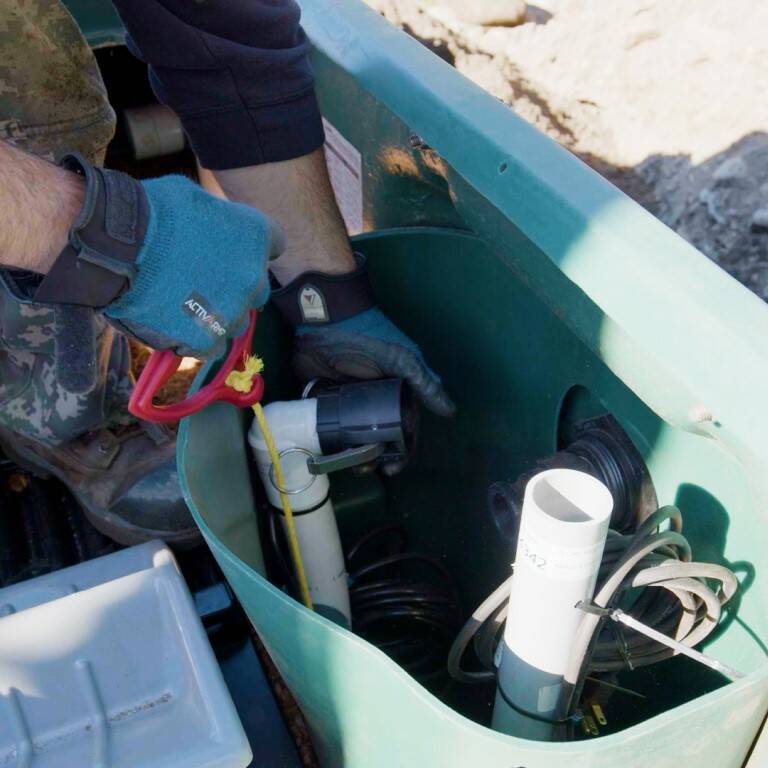
Ecoflo compact biofilter: if a pump is needed, it can be integrated directly in the tank to save space.
How does the Ecoflo compact biofilter compare with other alternative systems for high water tables?
Advanced septic systems are a long-term investment in your property. That’s why it’s important to understand your options before deciding which product to install.
To help you choose the right system for high water tables, let's compare the Ecoflo compact biofilter with other popular alternatives across a few provinces, including Alberta, British Columbia, and Ontario.
Synthetic media filters are a popular septic system for properties with high water tables in Alberta.
With these systems, a pump sends wastewater from your septic tank to the synthetic media filter. The synthetic media filter removes pollutants from wastewater as it trickles through. Effluent is then discharged to a drain field or another area for final dispersal.
Like the Ecoflo compact biofilter, synthetic media filters offer a space-saving alternative for properties with high groundwater. However, a closer look shows that Ecoflo is the smarter choice.
- Warranty
The warranty for the leading synthetic media filter in Alberta activates the day the system is installed and lasts for 3 years.
By comparison, the Ecoflo compact biofilter has a 10-year warranty that resets each time you renew your filter, guaranteeing your peace of mind for years to come.
- Reliance on pumps
Synthetic media filters rely on a pump to receive wastewater from your septic tank. If the pump fails, there’s no way for the system to continue treating wastewater.
Because Ecoflo provides advanced treatment without the use of pumps or any other electrical component, it reliably treats wastewater year-round, 24/7.
- Finding important information
As a septic system owner, you need to be able to provide documentation about your septic system upon request, such as installation date and proof of maintenance. Because synthetic media filter manufacturers don’t offer a centralized platform with this information, there’s no guarantee you’ll be able to find it.
Premier Tech, the manufacturer of the Ecoflo compact biofilter, offers an online platform that keeps all your septic system’s information in one place. This makes it easy to find details about your system’s installation date, maintenance history, and more.
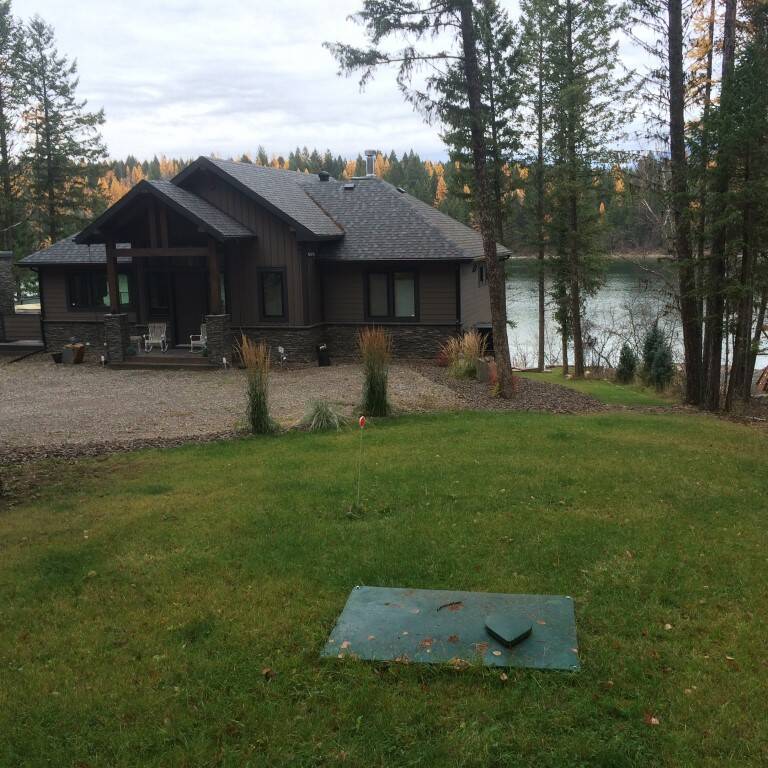
Ecoflo compact biofilter: gravity installations use no pumps, and treatment is 100% electricity-free.
Geotextile sand filters are a popular alternative on properties with high water tables in British Columbia.
These systems use an external pump to send wastewater to the top of a sand mound. From there, wastewater percolates through a geotextile layer that traps pollutants. Wastewater then goes through a sand layer for additional treatment before entering an underlying drain field.
Geotextile sand filters are installed directly above the drain field, making them easy to install on properties with high water tables and limited space. But Ecoflo has the edge for a few reasons.
- Low profile
As their name implies, geotextile sand filters use geotextile and sand to provide advanced treatment. Because these systems are installed over the drain field, they add extra height to the installation and stick out on your property.
Ecoflo’s advanced treatment happens in a tank that’s separate from the drain field. This gives Ecoflo installations a lower profile and makes them up to 25 cm (10”) shorter on properties with a high water table.
- Easy to troubleshoot
Since geotextile sand filters are buried under a sand mound, you can’t go in and fix them if there’s a problem. The only way to reach them is to dig them out, at which point you will likely need to get a new system.
The Ecoflo compact biofilter is easily accessible thanks to its lid. When it’s time for service or maintenance, we simply open the lid to get direct access to your system’s components.
- No pumps needed
Geotextile sand filters rely on pumps to get wastewater to the top of the sand mound and continue treatment, which means they can’t treat your wastewater if the pump loses power or stops working.
That isn’t a problem with Ecoflo. It doesn’t use pumps or any other electrical components to treat wastewater, ensuring your property is protected, even during power outages.
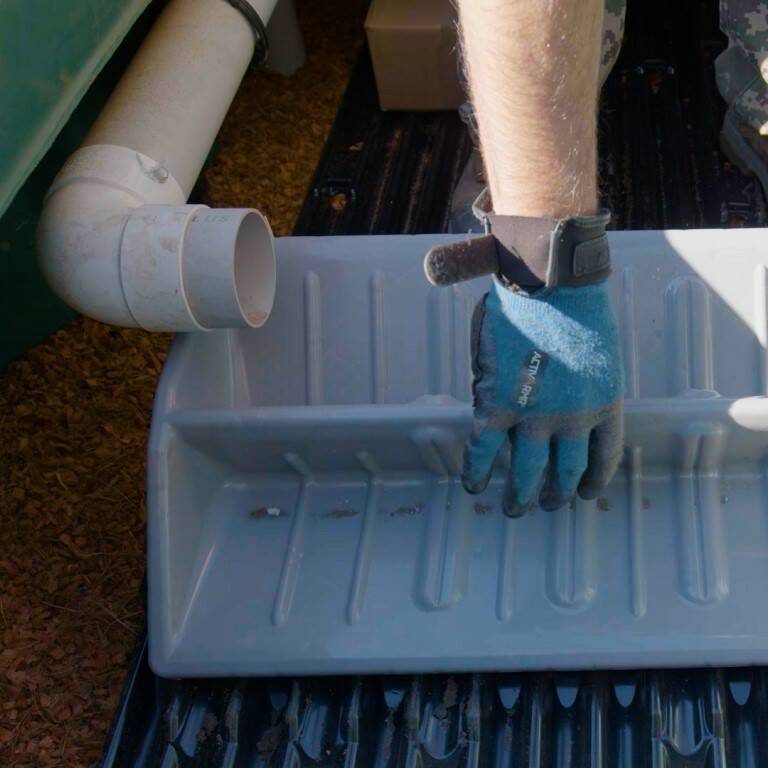
Ecoflo compact biofilter: zero-energy treatment thanks to a non-mechanical tipping bucket that distributes wastewater over the coco filter.
Basket biofilters are a popular option on properties with high water tables in Ontario.
The system uses a pump that sends wastewater from your septic tank to the basket biofilter. In the basket biofilter, a synthetic filter traps pollutants and allows wastewater to trickle through. Effluent is then sent to your drain field or another area for final dispersal.
While basket biofilters and the Ecoflo compact biofilter share a similar name, Ecoflo has several advantages that give it the long-term edge.
- Reliability during power outages
Basket biofilters use pumps as part of their operation, which makes them vulnerable to power outages.
The Ecoflo compact biofilter is a passive system that needs no electricity to treat your wastewater. It reliably operates around the clock, even if there is a loss of power.
- Warranty
Ontario’s leading basket biofilter manufacturer offers a warranty that stops after 20 years.
By comparison, Ecoflo has a 10-year warranty that resets each time you renew your filter. This lets you extend the warranty indefinitely and protect your property for years to come.
- Easy access to documentation
Many basket biofilters manufacturers don’t offer centralized record-keeping, making it tricky for you to track down essential information about your septic system.
Premier Tech, the manufacturer of the Ecoflo compact biofilter, keeps comprehensive records of your system. Information on your septic system, including its maintenance and filter history, is easy for you to find whenever you need.
